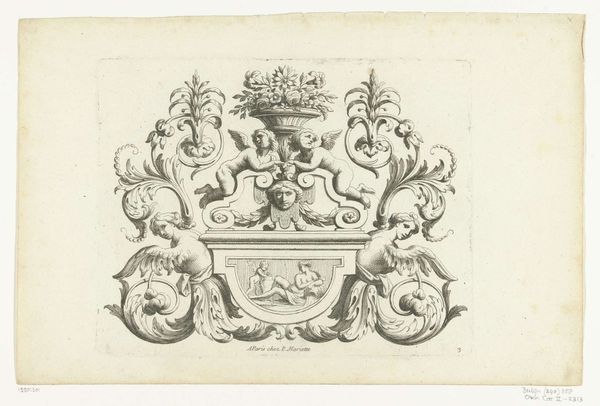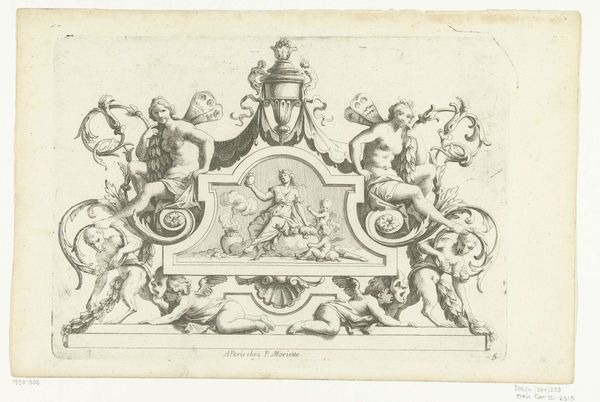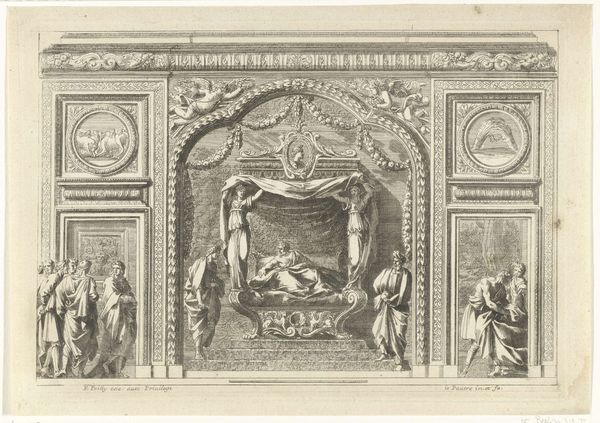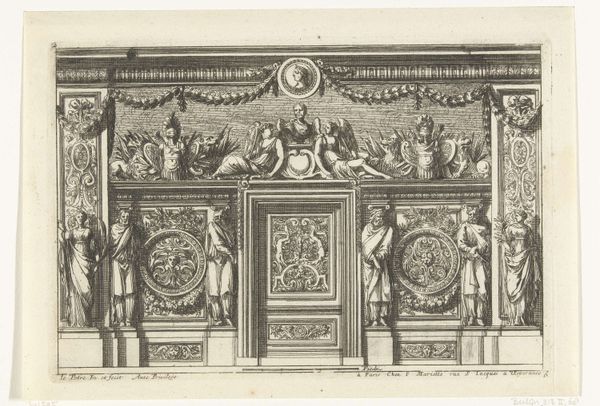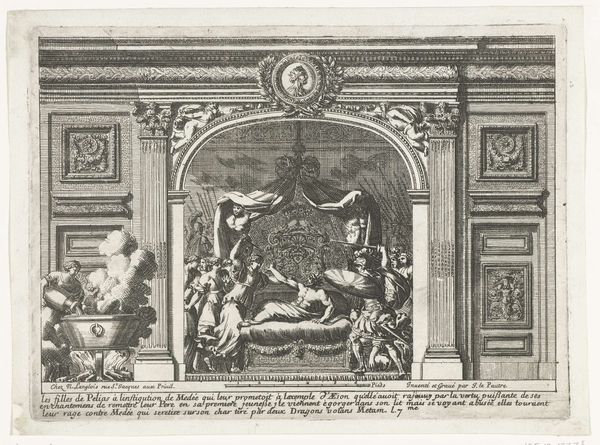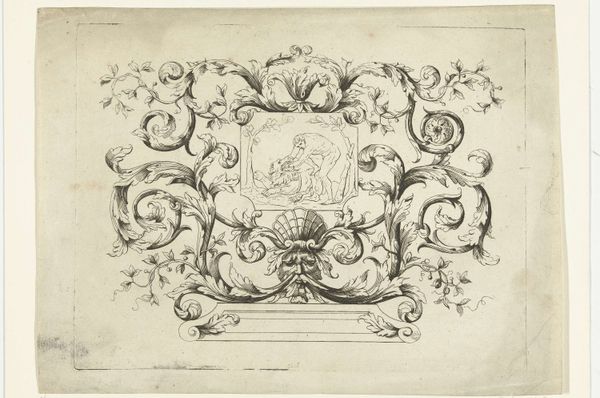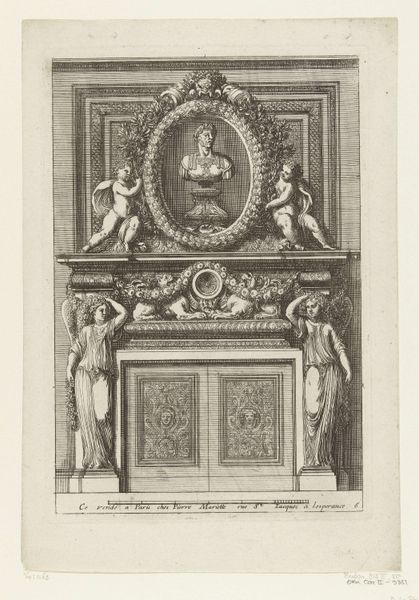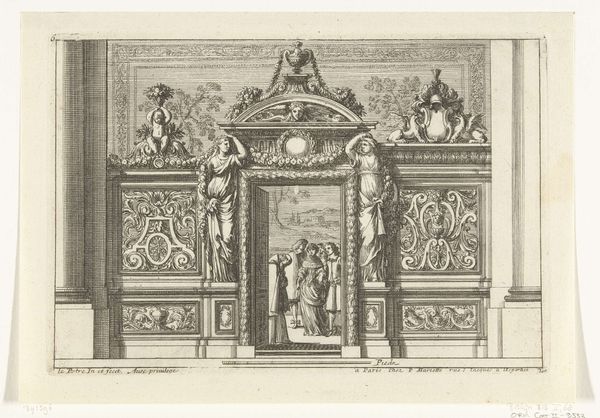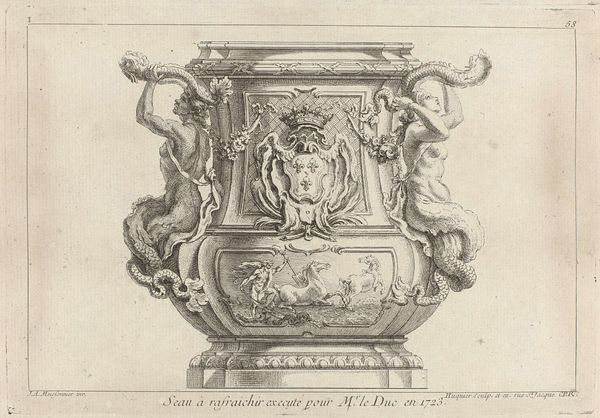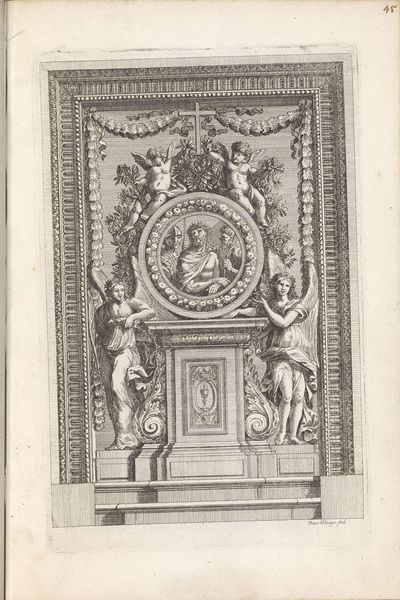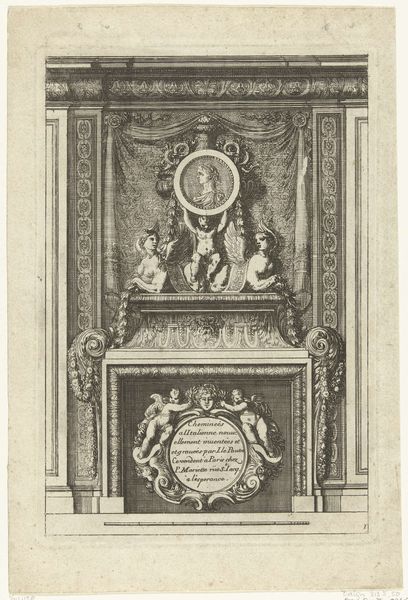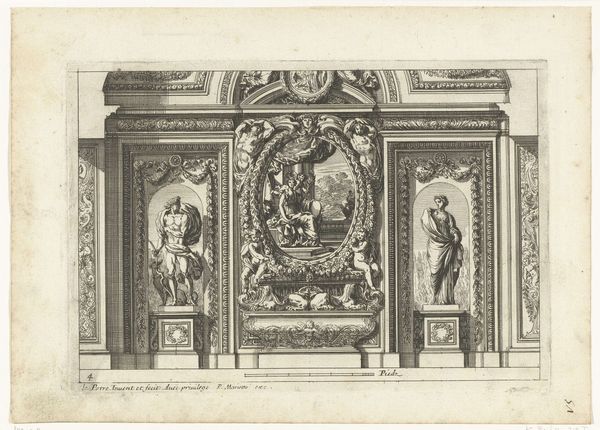
print, engraving
#
allegory
#
baroque
# print
#
old engraving style
#
figuration
#
form
#
line
#
history-painting
#
engraving
Dimensions: height 179 mm, width 240 mm
Copyright: Rijks Museum: Open Domain
Editor: So, here we have a print from around 1670-1680, titled "Rechthoekig paneel met een riviergodin"—"Rectangular panel with a river goddess"—by Alexis Loir. It’s incredibly ornate; a river goddess is depicted within a frame, surrounded by figures and decorative elements, all done in engraving. What really strikes me is the level of detail achieved in print form. How do you interpret the symbolism present in this work? Curator: This piece is rich in the visual language of its time. Consider how the river goddess isn't merely a depiction, but an embodiment of a life-giving force, a flowing current of culture and memory. The water nymphs with their fish tails, the putti, and even the framing foliage, all evoke ideas of abundance, fertility, and a connection to nature. Do you see how they act almost as keepers of a shared story? Editor: I see it now! It's like the whole panel is a container for ideas about nature's power. It reminds me of stories, myths passed down through generations. Are the urns placed on both sides contributing to these same narratives? Curator: Precisely! Urns can often represent containment, memory, or even loss. Their presence alongside the goddess asks us to consider the river not just as a source of life, but also as a witness to history, bearing the traces of time and culture. The piece is a testament to how visual symbols accrue layers of meaning over time, reflecting our evolving relationship with the natural world. Editor: This gives me a lot to think about. Seeing these common threads connecting it all, like abundance and continuity, is making me understand baroque art more as a cultural artefact that continues to echo. Curator: Exactly, the artwork becomes a cultural memory, an artifact that continuously resonates, echoing across the years and allowing us to reflect on ourselves.
Comments
No comments
Be the first to comment and join the conversation on the ultimate creative platform.
